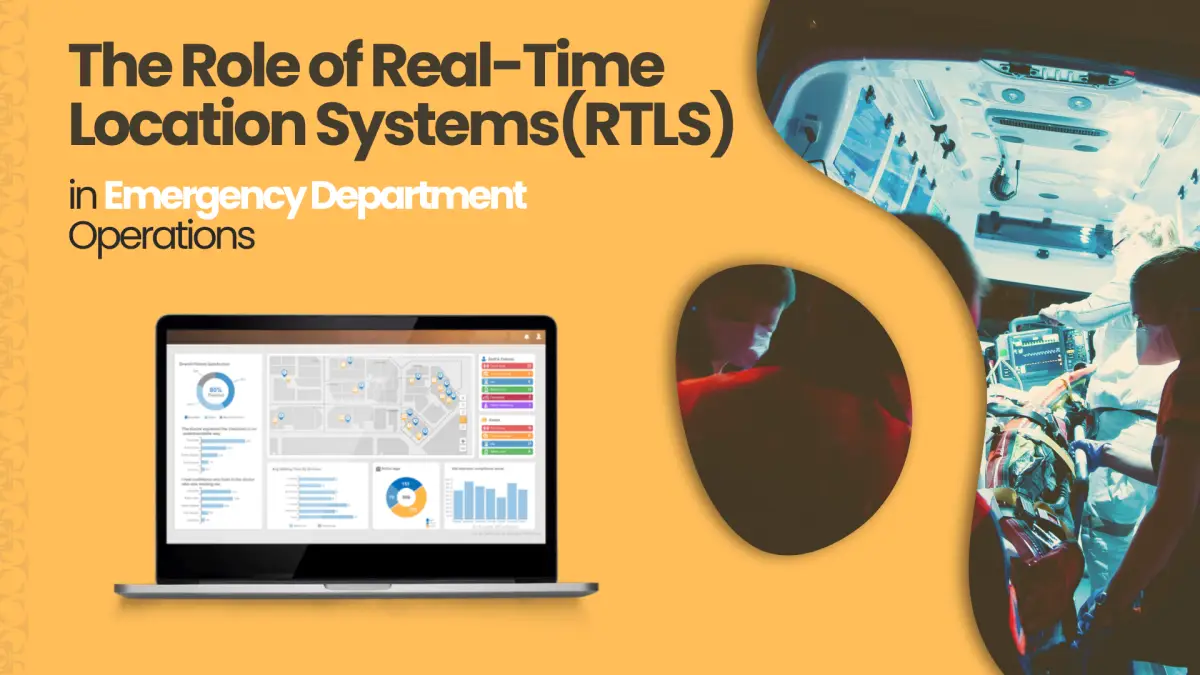Efficiently managing emergency department (ED) wait-time is a global healthcare challenge. Statistics reveal the extent of the issue: In the US approximately 78.3% of all patients and 66.9% of those needing immediate attention within one hour are seen by a physician within the recommended time frame in the median ED. Furthermore, only 30.5% of EDs manage to consistently meet triage targets for over 90% of their patients, with a mere 13.8% achieving this benchmark for patients triaged for a one-hour window. [1]
These delays could have profound consequences, affecting patient outcomes, hospital reputation, and financial viability. However, PenguinIN offers an innovative solution: Real-Time Location Systems (RTLS), PenTrack.
RTLS technology optimizes resource allocation, streamlines patient pathways, and improves operational efficiency, enhancing ED management to help hospitals not only meet but exceed triage and admission targets while simultaneously boosting their bottom line.
Here is what RTLS Solutions offer to hospitals, resolving ED problems and enhancing patient experience:
1. Enhanced Patient Flow: Optimizing Processes
RTLS offers precise patient tracking within the ED, minimizing bottlenecks and reducing wait times, thereby streamlining patient flow.
2. Reduced Patient Length of Stay (LOS): Faster Care Delivery
Through streamlined processes and timely care, RTLS contributes to shorter patient LOS, enabling quicker bed turnover and increased ED capacity.
3. Resource Allocation: Efficient Utilization
Real-time monitoring of staff, equipment, and patient locations through RTLS ensures the efficient allocation of resources, preventing overstaffing and optimizing resource usage.
4. Improved Patient Satisfaction: Elevating the Experience
Enhanced ED efficiency, facilitated by RTLS, fosters patient satisfaction, fostering trust and loyalty among patients.
5. Billing Accuracy: Precise Financial Transactions
Accurate tracking of patient movements and treatments via RTLS ensures precise billing, reducing the risk of revenue loss due to errors.
6. Data-Driven Decision Making: Informed Optimization
RTLS generates valuable data for analysis, allowing hospitals to make informed decisions, optimize processes, and improve patient care.
7. Reduced Diversions: Efficient Patient Management
Effective patient flow management with RTLS reduces the need for diversions during peak times, ensuring continuous ED operation and revenue generation.
8. Improved Compliance and Documentation: Meeting Standards
RTLS enhances compliance with regulatory requirements and documentation standards, reducing the risk of penalties and revenue loss due to non-compliance.
9. Enhanced Emergency Medical Services (EMS) Coordination: Seamless Transitions
RTLS facilitates improved coordination with EMS providers, leading to faster patient transfers and better communication, ultimately optimizing ED resource utilization.
In the healthcare domain, RTLS stands as a valuable tool, streamlining ED operations and improving patient care. While the benefits are evident, successful implementation requires careful planning and tailored monitoring to align with each hospital’s unique needs and objectives.
To learn more about our services for Healthcare, visit: https://penguinin.com/healthcare/
Request a call with us to know more at: [email protected]
1 Source: https://www.ncbi.nlm.nih.gov/pmc/articles/PMC2830619/

